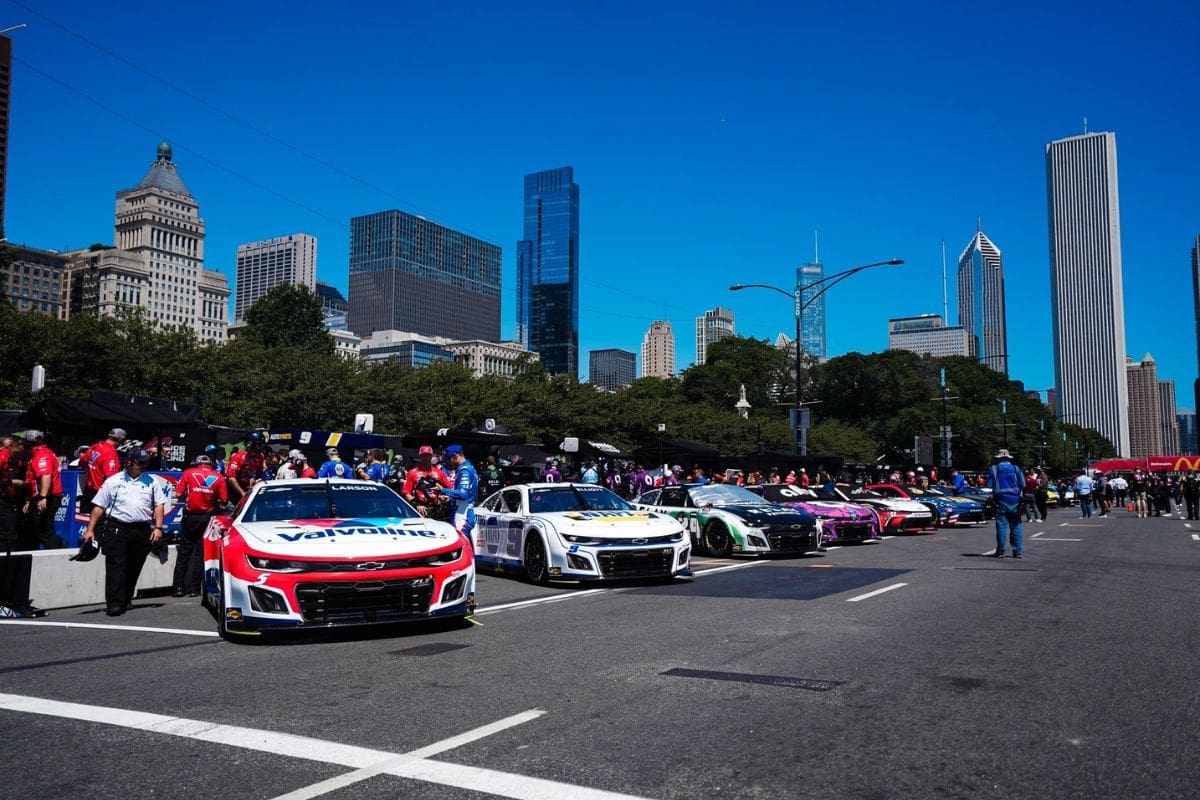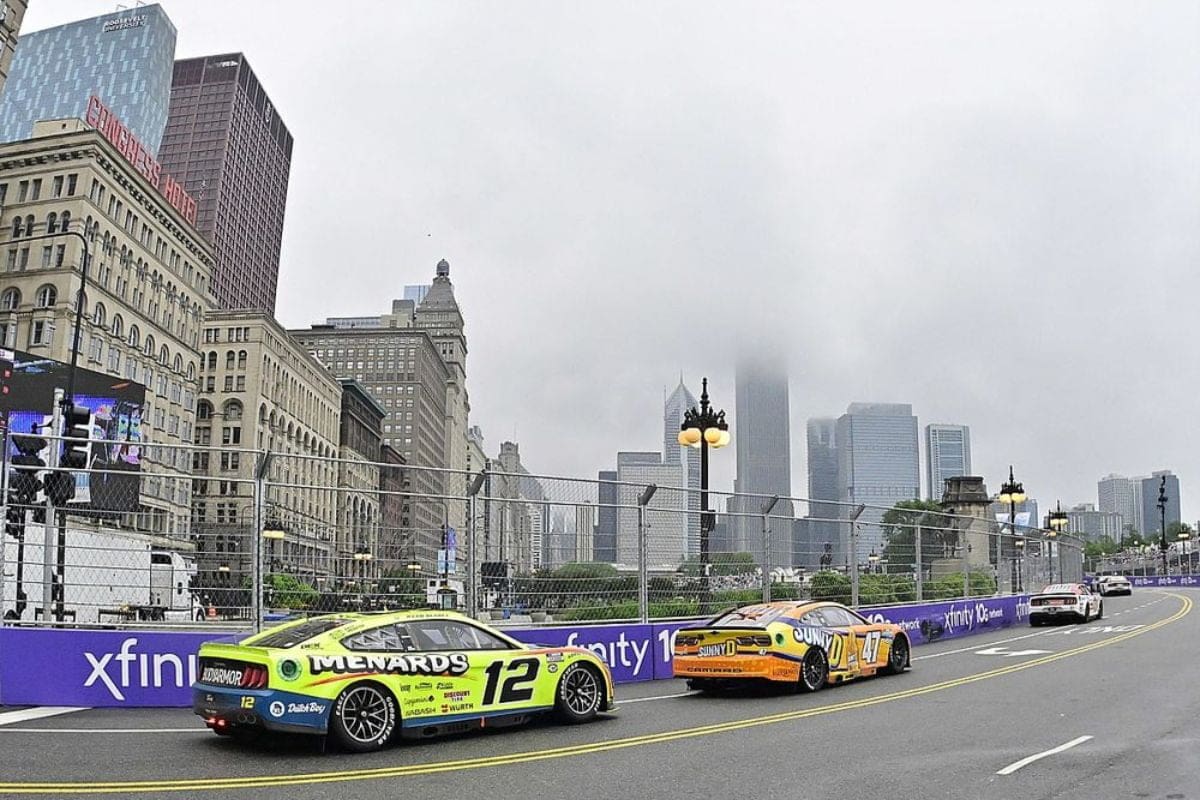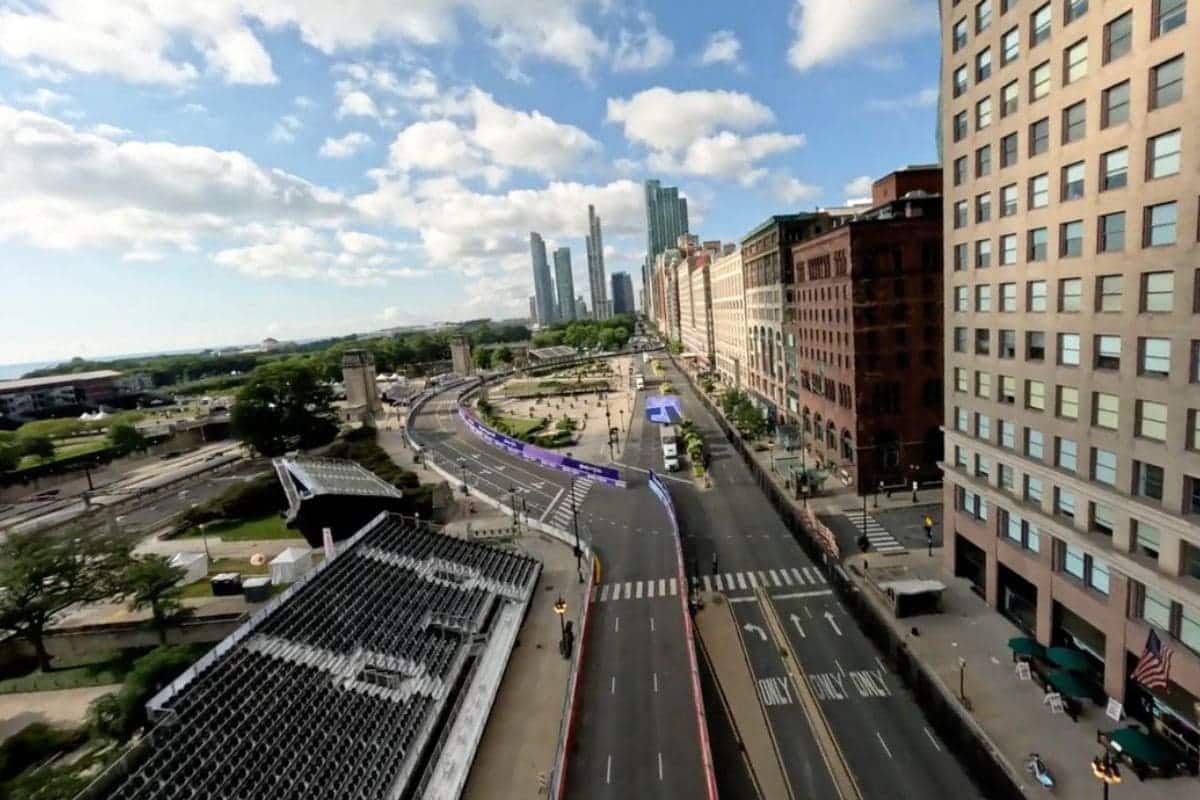NASCAR’s Chicago Race Losing Money: The recent insider insights about NASCAR’s Chicago Street Course losing money have sparked a debate over the financial and strategic underpinnings of the event. A significant revenue shortfall, worsened by a rain delay and lower-than-anticipated attendance, has come to light, prompting questions about the economic viability of this high-profile race. While the financial losses are evident, the reasons for continuing the event, such as NASCAR’s dedication to diversity and its influence on local businesses, paint a complicated picture. As these financial and strategic dynamics evolve, the wider consequences for NASCAR’s future endeavors and community relations become more and more fascinating.
Key Highlights
- A rain delay and lower-than-expected attendance led to a 25% revenue shortfall for NASCAR’s Chicago race.
- Chicago invested $3.2 million compared to NASCAR’s $620,000, creating an economic imbalance.
- Local businesses faced disruptions despite short-term sales boosts, leading to financial and operational challenges.
- NASCAR’s diversity initiative aims to expand its audience but faces financial sustainability issues.
- Community relations are strained due to noise, disruptions, and inadequate compensatory measures for residents and businesses.
Rain Delay and Economic Impact
Amid the excitement of NASCAR’s return to Chicago, a significant rain delay highlighted the unpredictable economic repercussions for the event, with attendance figures falling short of expectations at 75,000 compared to the projected 100,000. This unforeseen meteorological disruption has hampered the spirits of racing enthusiasts and created a significant financial shortfall. The anticipated revenue, based on a full turnout, was undercut by 25%, presenting a stark example of how external factors can impact large-scale sports events.
The economic implications extend beyond ticket sales. Ancillary revenues from concessions, merchandise, and local hospitality services also experienced a downturn. Typically, higher attendance translates to increased spending on food, beverages, and souvenirs, which all contribute collectively to the overall profitability of the event. The lower-than-anticipated turnout thus posed a multi-faceted economic challenge, exacerbating the strain on both NASCAR and the local businesses that rely on such high-profile gatherings.

Furthermore, the rain delay itself incurs additional operational costs. Provisions for extended security, staffing, and logistical support to manage the crowd and guarantee safety further inflate the expenditure, while the delay potentially reduces the time available for on-track action, thereby diminishing the spectator experience. Such a scenario requires a delicate balance between maintaining event quality and managing financial viability.
NASCAR’s Diversity Initiative
NASCAR’s recent efforts to widen its audience represent a significant strategic shift aimed at expanding the sport’s appeal beyond its traditional demographic stronghold. Historically dominated by white males, the motorsport landscape has often appeared limited, seldom venturing beyond its established boundaries. However, NASCAR‘s executives have recognized the importance for inclusivity and diversity in maintaining the sport’s viability in an evolving cultural conditions.
“I think when NASCAR opens the gates at every track, they make money. I think they’re not making money there. I don’t see how they would be making money unless the city of Chicago were paying them a 5 or 6-million-dollar check to roll into town. And I think it may even be the opposite.” – Brett Griffin
The Chicago Street Race is symbolic of this innovative vision. By venturing into urban centers like Chicago, NASCAR aims to attract a more diverse audience, potentially cultivating interest among various racial, ethnic, and socioeconomic groups who may not have previously engaged with the sport. This initiative reflects a broader strategy to break down the barriers that have historically segmented NASCAR’s fan base.
This initiative is not just symbolic but is put into action through tangible steps. Hosting events in geographically and demographically varied locations is intended to create accessible entry points for new fans. The choice of Chicago, a city known for its multicultural diversity, highlights NASCAR’s commitment to inclusivity. The hope is that such events will resonate with a wider range of spectators, thereby expanding the sport’s cultural influence.
Yet, this strategic shift is not without its challenges. Financial implications loom large, especially given the concerns expressed by industry insiders like Brett Griffin. The profitability of these ventures remains uncertain, dependent on numerous variables including city partnerships and local engagement. Nevertheless, NASCAR’s intentional push towards diversity is a strategic effort to future-proof the sport, ensuring its relevance and significance in an increasingly diverse global society.
Achieving Diversity Amid Financial Challenges
While the pursuit of variety in NASCAR is yielding positive demographic shifts, the financial challenges associated with such initiatives remain a significant hurdle. The 2023 Chicago Street Race exemplifies this duality, as it attracted a remarkable 85% of initial-time motorsports attendees, showing a broader and more diverse audience. However, the financial implications cannot be ignored.
“Where I am going with this is, you know we talk about wanting to diversify the fanbase – whether that be age, race, religion, whatever – in a city like Chicago you can do that. If we are racing in the middle of nowhere in Brooklyn or Michigan, it ain’t gonna happen.” – Brett Griffin
The economic landscape reveals a contrast between the costs and returns. Chicago invested heavily in the infrastructure required for the race, with expenditures amounting to $3.2 million. NASCAR’s contribution, in comparison, was a relatively modest $620,000. This disparity highlights the immediate financial burden on the city, mix against NASCAR’s strategic goal of diversifying its fanbase. Herein lies the crux of achieving diversity amid financial challenges: the alignment of long-term strategic goals with short-term economic realities.
- Demographic Shift Versus Financial Viability: While attracting a diverse audience is commendable, the economic model must adapt to ensure sustainability. The current financial outlay by cities like Chicago may not be sustainable without a more balanced financial partnership with NASCAR.
- Economic Impact Assessment: The projected economic impact of $113.8 million fell short, with actual figures at $109 million. This discrepancy signifies the need for more accurate forecasting and planning to meet financial expectations.
- Strategic Investment in Diversity: NASCAR’s objective of diversifying its fanbase, as articulated by Griffin, is undeniably strategic. However, the financial dynamics must be addressed to avoid alienating host cities and making certain that the diversity initiative is not economically prohibitive.

Impact on Local Businesses
The distinctive character of the Grant Park race, being the sole street race on NASCAR’s timetable, demands substantial changes to the city’s layout, which in turn has far-reaching consequences for local businesses. The extensive preparation and execution needed for this occasion disrupt daily operations, especially for businesses situated along the sealed-off streets.
For example, in 2023, an Italian ice and snack shop on Michigan Avenue and Jackson Boulevard sought $76,174 to compensate for 19 days of disturbance. This financial challenge highlights the difficulties encountered by small businesses when the urban setting is altered for large-scale events.
Despite these interruptions, the race also brings a surge in pedestrian traffic, presenting a mixed bag of outcomes for local enterprises. Jayden Valencia, a staff member at Kong Dog, depicted the situation as ‘overwhelming,’ with queues stretching outside and a constant influx of customers. Such increased activity can be a two-sided coin: while it enhances sales temporarily, it can strain resources and staff, potentially jeopardizing service quality and long-term customer satisfaction.
“It was super busy. We had a line going out the door and there were just flocks of people coming in. Every time there is something happening in the Loop this place gets pretty crowded but NASCAR was, like, overwhelming.” – Valencia
Examining these effects exposes a contrast between short-term gains and long-term operational hurdles. The influx of visitors and revenue during the event may provide a financial boost, but the preparation and aftermath entail significant logistical obstacles. The need to juggle these factors is crucial for businesses seeking to take advantage of the event without suffering substantial losses.
Moreover, the wider economic consequences for the local economy must be taken into account. While the event attracts visitors to the city, the costs of disturbances and the possibility of alienating local patrons cannot be overlooked. Therefore, the overall impact on local businesses is intricate, necessitating strategic approaches to mitigate negative effects while maximizing potential advantages.
Community Relations and Future Prospects
Exploring the intricate dynamics between community relations and future prospects, it becomes clear that reconciling the interests of local residents and businesses with the demands of hosting NASCAR’s high-profile event poses a significant challenge.
The dissonance is exemplified by the experience of Exile in Bookville, a bookstore on Michigan Avenue. Co-owner Kristin Enola Gilbert had to cancel lucrative author events and modify store hours due to the disruptive noise from the race. Gilbert’s frustration highlights a broader sentiment: “The problem does not lie with NASCAR or NASCAR fans. My issue is squarely with the city of Chicago. I am very, very upset again.”
The city’s relationship with its residents and businesses is strained, revealing three critical areas for improvement:
- Noise and Disruption Management: The deafening noise from stock cars not only disrupts businesses but also affects the daily lives of residents. Effective noise management strategies and scheduling adjustments can alleviate these disruptions.
- Economic Balance: While diversity initiatives are commendable, they must align with economic strategies that benefit the local community. This balance can be achieved through compensatory measures for affected businesses and increased local economic participation in event planning.
- Community Engagement: Transparent communication and active engagement with local stakeholders are crucial. Establishing a dialogue can foster collaborative solutions, ensuring that the interests of both NASCAR and the community are addressed.

News in Brief: NASCAR’s Chicago Race Losing Money
The financial challenges facing NASCAR’s Chicago race, exacerbated by a rain delay and decreased attendance, highlight the importance for a more sustainable economic model.
The disparities between investments from Chicago and NASCAR, alongside the 25% revenue undercut, emphasize the need for strategic realignment. Balancing economic viability with the commitment to diversity initiatives is essential.
Additionally, the impact on local businesses and community relations calls for a reassessment of future prospects to guarantee mutual benefits and long-term success.
ALSO READ: Chicago Street Race in Danger Amid City Protests Despite Success

